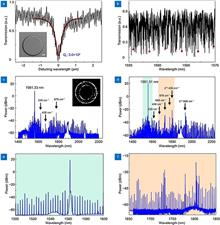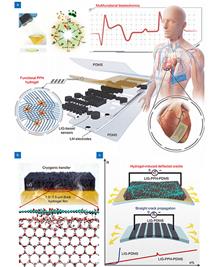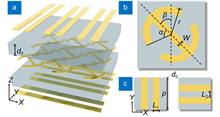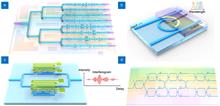 View fulltext
View fulltext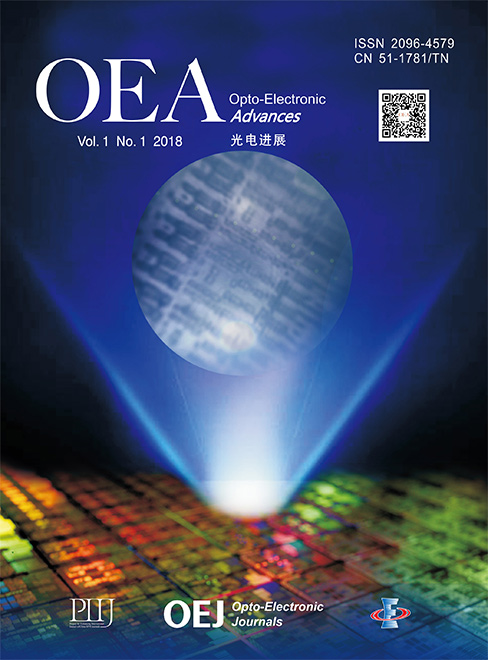
Soliton microcombs, which require the hosting cavity to operate in an anomalous dispersion regime, are essential to integrate photonic systems. In the past, soliton microcombs were generated on cavity whispering gallery modes (WGMs), and the anomalous dispersion requirement of the cavity made by normal dispersion material was achieved through structural dispersion engineering. This inevitably degrades the cavity optical quality factor (Q) and increases pump threshold power for soliton comb generation. To overcome the challenges, here, we report a soliton microcomb excited by cavity polygon modes. These modes display anomalous dispersion at near-infrared while optical Q factors exceeding 4×106 are maintained. Consequently, a soliton comb spanning from 1450 nm to 1620 nm with a record low pump power of 11 mW is demonstrated, a three-fold improvement compared to the state of the art on the same material platform.
Highly stretchable laser-induced graphene—hydrogel film interfaces in flexible electronic materials are fabricated by frozen exfoliation, and exhibit high stretchability, durability, and design flexibility. This technology offers an advanced technological pathway for manufacturing highly flexible substrates. They can be utilized in numerous complex surface applications, providing an advanced technological pathway for manufacturing highly flexible substrates in the future.
Optical metasurfaces, comprising subwavelength quasi-planar nanostructures, constitute a universal platform for manipulating the amplitude, phase, and polarization of light, thus paving a way for the next generation of highly integrated multifunctional optical devices. In this work, we introduce a reflective metasurface for the generation of a complete (angularly resolved) polarization set by randomly interleaving anisotropic plasmonic meta-atoms acting as nanoscale wave plates. In the proof-of-concept demonstration, we achieve multidirectional beam-steering into different polarization channels forming a complete set of polarization states, which can also be dynamically altered by switching the spin of incident light. The developed design concept represents a significant advancement in achieving flat polarization optics with advanced functionalities.
Based on the principle of super-symmetric lens with quadratic phase gradient transformation, combined with the principle of digital coding of metasurface, we propose a wide-angle coded metalens for focusing control in two-dimensional space. This metalens achieves focus shift in the x-direction by changing the oblique incidence angle of the incident wave, and focus control in the y-direction by combining with the convolution principle of the digitally coded metasurface to achieve flexible control of light focusing in the two-dimensional plane. The metasurface unit is mainly composed of three-layer of metal structure and two layers of medium, and the transmission phase is obtained by changing the middle layer of metal structure, which in turn obtains the required phase distribution of the metalens. The design of the metalens realizes the function of the lens with a large viewing angle at the x-polarized incidence, and realizes two-dimensional focus control. Experimentally, we prepared the designed coding metalens and tested the focus control function of the wide-angle coding metalens. The experimental results are in good agreement with the design results.
Despite the pressing demand for integrated spectrometers, a solution that deliver high-performance while being practically operated is still missing. Furthermore, current integrated spectrometers lack reconfigurability in their performance, which is highly desirable for dynamic working scenarios. This study presents a viable solution by demonstrating a user-friendly, reconfigurable spectrometer on silicon. At the core of this innovative spectrometer is a programmable photonic circuit capable of exhibiting diverse spectral responses, which can be significantly adjusted using on-chip phase shifters. The distinguishing feature of our spectrometer lies in its inverse design approach, facilitating effortless control and efficient manipulation of the programmable circuit. By eliminating the need for intricate configuration, our design reduces power consumption and mitigates control complexity. Additionally, our reconfigurable spectrometer offers two distinct operating conditions. In the Ultra-High-Performance mode, it is activated by multiple phase-shifters and achieves exceptional spectral resolution in the picometer scale while maintaining broad bandwidth. On the other hand, the Ease-of-Use mode further simplifies the control logic and reduces power consumption by actuating a single-phase shifter. Although this mode provides a slightly degraded spectral resolution of approximately 0.3 nm, it prioritizes ease of use and is well-suited for applications where ultra-fine spectral reconstruction is not a primary requirement.







